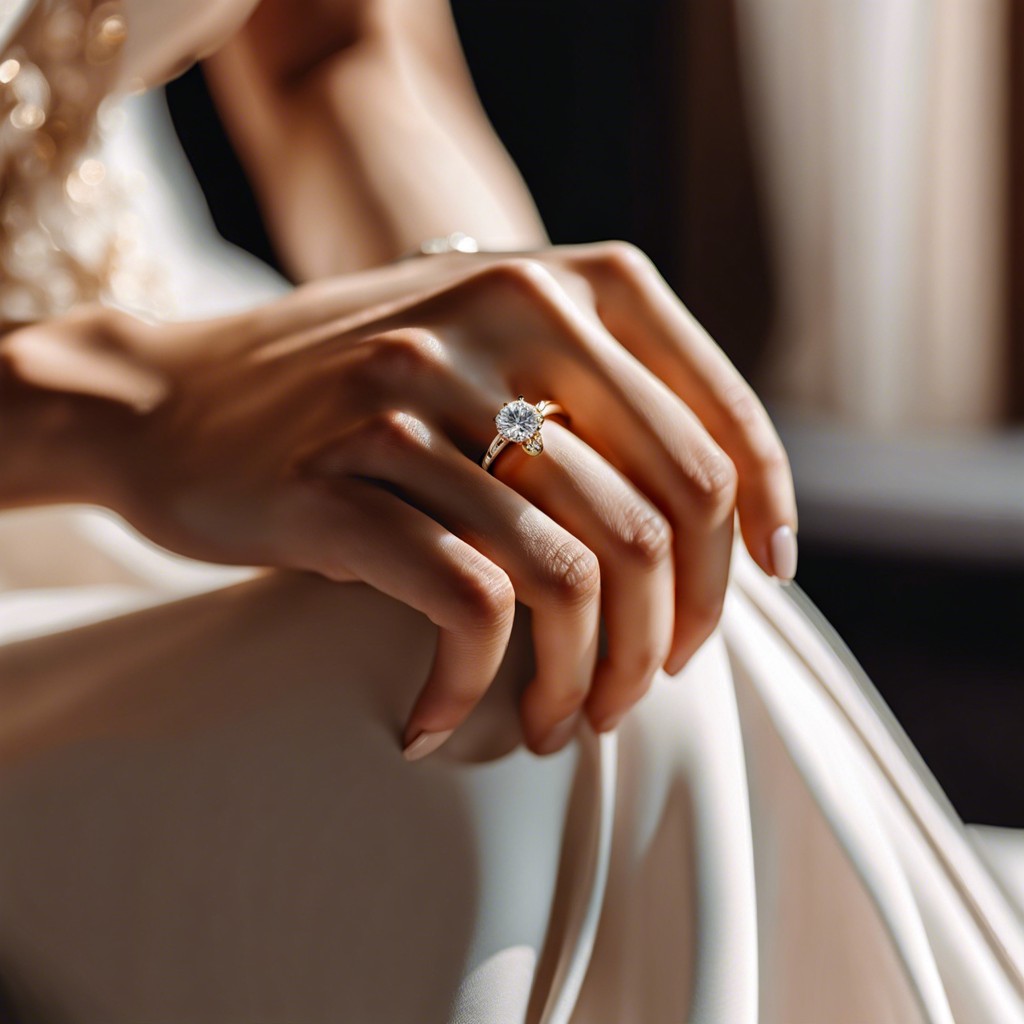Learn how to budget appropriately for a wedding ring with practical advice and factors to consider.
Key takeaways:
- Average cost: ,000-,000 for a wedding ring.
- Factors affecting cost: material, stone size, quality.
- Budgeting tips: allocate a percentage of overall wedding budget, explore payment options, have a cushion for unexpected expenses.
- Impact on other financial goals: consider balance, plan ahead, explore alternatives.
- Cultural expectations and personal significance: different cultures and families have different expectations, personal values also play a role.
Average Costs and Expectations

Spending on wedding rings varies widely, but understanding the average cost can guide your decision. Currently, couples typically allot between $1,000 and $5,000 for a ring. This range reflects options for different materials like gold, platinum, and the inclusion of diamonds or other precious stones.
The expectation is for the ring to symbolize commitment, making quality a consideration alongside cost. Balancing between splurging and sticking to a reasonable budget can be tricky, but knowing the average expense helps frame what you might expect to spend.
Factors Affecting Cost: Material, Size, and Quality of the Stone
The choice of material greatly influences the ring’s price. Gold, platinum, and silver are common, with platinum usually being the most expensive due to its durability and rarity.
Stone size also plays a crucial role in determining the cost. Larger stones generally mean a higher price tag. However, the type of stone affects this too; diamonds are pricier than less common alternatives like sapphires or moissanite.
Stone quality cannot be overlooked. Clarity, color, cut, and carat (the Four Cs) dictate a stone’s value. High-quality diamonds that excel in all four areas are the most sought after and consequently more expensive.
Carefully consider how each factor relates to your budget and what compromises you might be willing to make. For instance, opting for a smaller stone or a different type of metal can make a significant difference in the overall cost.
Personal Finance: Budgeting Tips
Crafting a realistic budget for your wedding ring is essential. Start by reviewing your overall wedding budget to determine how much you can allocate for the ring without compromising other elements like the venue or attire.
Consider setting aside a specific percentage of your total wedding fund for the ring. A common recommendation is spending about three to five percent of the wedding budget on rings. This helps keep your spending in check and ensures the cost aligns with your financial situation.
Also, remember to explore various payment options. Some jewelers offer installment plans without interest, which can ease the burden of a large upfront expense. This method allows you to spread out the cost over a period that suits your financial plans, making it manageable without straining your resources.
Lastly, always keep a cushion in your budget for unforeseen expenses. It’s wise to prepare for potential adjustments in ring prices or personal financial shifts during the planning phase. This proactive approach will help you navigate financial surprises smoothly.
Impact of the Purchase On Other Financial Goals
Purchasing a wedding ring can influence your ability to meet other financial objectives. It’s wise to consider how allocating a significant amount of money to a ring might delay or impact other plans, such as saving for a house or building an emergency fund.
– Balance is crucial. Prioritize your spending to strike a happy medium between splurging on a wedding ring and funding other essential goals.
– Planning helps. Setting aside a monthly amount specifically for the ring purchase can mitigate sudden financial stress, allowing you to smoothly integrate this expense without disrupting your broader financial landscape.
– Alternatives save money. Exploring less traditional or simpler designs can fulfill your dream while preserving funds for other significant investments.
Each decision regarding your wedding ring’s budget will ripple through your financial planning. By considering these consequences, you ensure that your choice aligns with your long-term fiscal health and happiness.
Cultural Expectations and Personal Significance
Different cultures and families often have their own expectations regarding how much to spend on a wedding ring. For instance, some traditions view the wedding ring as a significant symbol of commitment and suggest investing two to three months’ salary into the purchase. Meanwhile, others place emphasis on simplicity and modesty, which can influence a more economical choice.
Personal significance also plays a pivotal role. A ring that carries a family heirloom stone, for example, might mean you spend more on a custom setting that honors this history. On the flip side, if you value ethical sourcing or specific craftsmanship, these preferences could steer you towards rings that are either costlier or more affordable.
By understanding both the cultural influences and what personally resonates with you, it becomes easier to decide on a budget that reflects your values without straining your finances.



